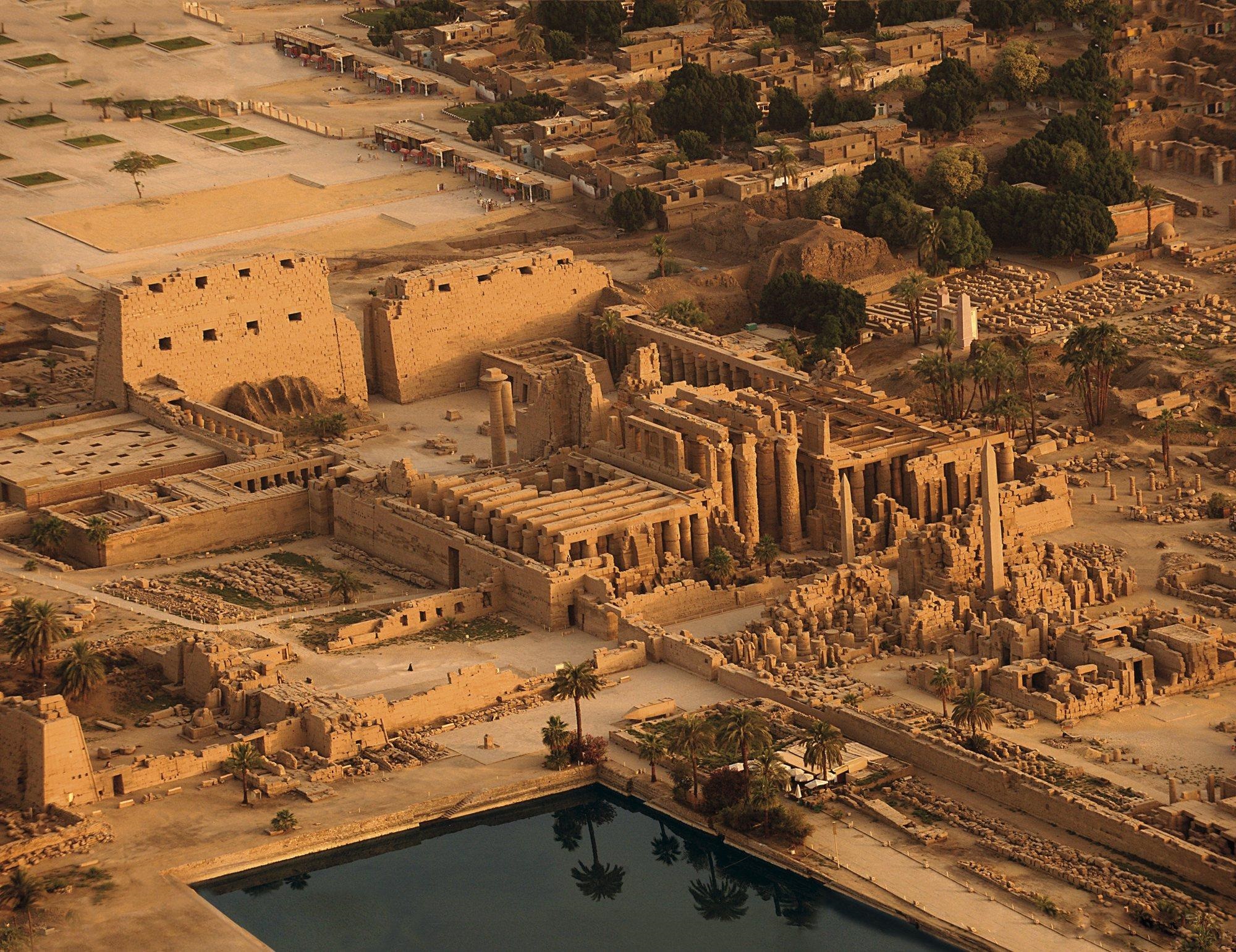The vast Karnak Temple complex dominated Thebes for 2,000 years. Its beginnings, however, were very modest.
At first glance, the great Amun-Ra temple complex at Karnak presents a bewildering array of pylons, courts, columned halls, shrines and smaller, separate temples.
For over 2000 years, successive kings left their mark by building or decorating at Karnak, often tearing down or renovating their predecessors' efforts.
So where did it all start? At the very heart of it all.
Today, Karnak's beginnings are represented by a large, virtually empty space, the edge of which you can just see to the lower right of the photo above. This was the site of the First Intermediate Period temple that marked the beginnings of Amun-Ra's cult at Thebes.
Remains of a small temple dedicated to Amun-Ra were unearthed there, built by Intef II, around 2,100 B.C. Previously Thebes was the stronghold of Montu, a local falcon-headed war god. However Amun's rise didn't mean Montu was forgotten entirely; a separate precinct for Montu lies north of the main temple of Amun.
Karnak Temple would remain a fairly humble affair for another 500 years until the arrival of the New Kingdom around 1,500 B.C. Karnak now blossomed as tribute poured in from Egypt's conquests around the region; victories credited to the blessing of Amun-Ra. The pharaohs were keen to display their wealth, power and piety through grand construction projects at Karnak.
As the powerful kings made their mark, adorning the temple with new entrance pylons, obelisks and grand halls, the temple expanded outwards. Today, as visitors walk through Karnak Temple they encounter the very latest additions first (to the left of the photo), and then go progressively back in time to the empty central court.
What happened to Karnak's earliest holy buildings? They were likely carted off as handy building material in the centuries after the Roman conquest in 30 B.C.
This photo of the main Amun-Ra temple complex at Karnak was taken by Kenneth Garrett.
